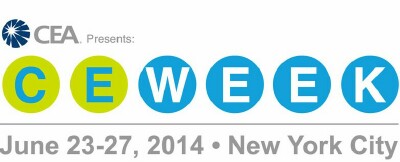Ultra HD Sales Beat Forecasts

At last year's Consumer Electronics Week in New York, there were huge differences of opinion over how the public would embrace ultra high-definition TV sets in 2014. It looks like the gulf in opinion has only widened after catching what recently happened at this year’s CE Week.
Flashing back to 2013 -- a year in which everyone agreed ultra HD set adoption would be scant at best, limited to ultra early adopters – the Consumer Electronics Association's research staff, led by director and chief economist Shawn DuBravac, concluded that less than 500,000 UHD sets would be sold this year. Boy, are you off-base, senior TV set makers and retail executives shot back at several CE Week sessions.
From the grassroots reaction we're learning that at least one million UHD sets will be sold in 2014, perhaps more.
DuBravac returned to CE Week's Your Next TV conference last Tuesday and predicted the same outcome: About 485,000 UHD sets will end up in TV households this year, with 2015 being the year sales top 1.2 million. On that very panel, Futuresource senior analyst Jack Wetherill predicted 25 percent of all U.S. TV households will own at least one UHD set by 2018.
It didn't take long for TV set makers to decry CEA's low projection. One panel later, Toshiba vice president Scott Ramirez, one of the detractors going public last year, declared again that 2014 sales will outstrip CEA's estimate by a wide mile. "People will buy these sets because of the jaw-dropping picture quality," he said. Point to remember: that picture quality will happen largely due to upscaling, until the majority of content is produced in native UHD.
The same retailers backing up that argument in 2013 were no less optimistic this year. "The people who come by our stores are wild about these TVs," noted Value Electronics founder Robert Zohn. "Retailers like Best Buy and Costco are doing a good job educating the public about what these sets offer." Another plus: Smart TV features such as Web browsing, side-by-side TV and Web screens and gaming that consumers increasingly find valuable, Zohn added.
DuBravac's team will release its latest 2014-and-beyond UHD projection in a few weeks. He offered no clue at CE Week over how it will turn out. One other note: Because there was no time for press audience questions at the early Your Next TV sessions involving CEA and the set makers -- a huge mistake, given this was a conference directed at the press -- no one challenged the projections from all parties.
While correcting that error, something else Your Next TV organizers – and, for that matter, consumer electronics events in general, should set time aside for -- is discussions over how to sell smart and ultra HD sets among people of color. Study after study confirms African-Americans, Latinos, Asian-Americans, etc. are the population quick to adopt and embrace new technologies. Yet you don't see or hear Samsung, Vizio, Sharp, LG, etc. present smart/UHD ads on BET, TVOne, Univision, Telemundo, MNet, etc. on the network or local level. The same is true of Best Buy, Costco and local retailers. You don't see or hear about outreach multimedia to specific audiences of color.
To Southern California retailer Video & Audio Center's credit, they have Spanish, Persian and Vietnamese-speaking representatives on hand in their stores, according to enterpreneur Tom Campbell. That’s great, but it’s not enough.
Far more attention paid to the growing population of color by manufacturers and retailers alike would offer far more chances that the glowing UHD sales picture they stand behind happens this year. How about it?
Other observations from the CE Week passing parade:
Android TV, Google's latest TV operating system (succeeding Google TV), rolled out last Wednesday at the company's I/O developer conference in San Francisco. Sony and Sharp, both CE Week exhibitors, will incorporate Android TV into their upcoming models. With a lot of New York tech press at CE Week, and Google's NY headquarters a few blocks away, you might conclude Google would surface at CE Week and invite all that press to see Android TV for themselves via teleconference. You might. They didn't.
This is the latest example of Google's public relations team operating in the Stone Age, rather than take advantage of natural opportunities to boost attention.
Smart TV may be more of a driver to UHD adoption than some people suspect. At least Seiki, the Asia-based manufacturer making its CE Week debut last year, believes so. Their low-priced UHD set last June, under $1000, didn't have any smart apps. Their latest model, still under $1000, has a few, with room to spare for more.
Leading candidate for most unusual UHD debut at CE Week goes to European-based Bang & Olufsen, entering the U.S. market with its Avant model. Priced under $10,000, Avant comes with a pedestal that allows the set to rotate clockwise or counter-clockwise so it fits where the consumer wants to watch in their room. Also, the screen can shift angles while rotating. Pricey and cool. If you don't want the pedestal, the price comes down to $7,999.
Until the next time, stay well and stay tuned!
The opinions and points of view expressed in this commentary are exclusively the views of the author and do not necessarily represent the views of MediaBizBloggers.com management or associated bloggers. MediaBizBloggers is an open thought leadership platform and readers may share their comments and opinions in response to all commentaries.

